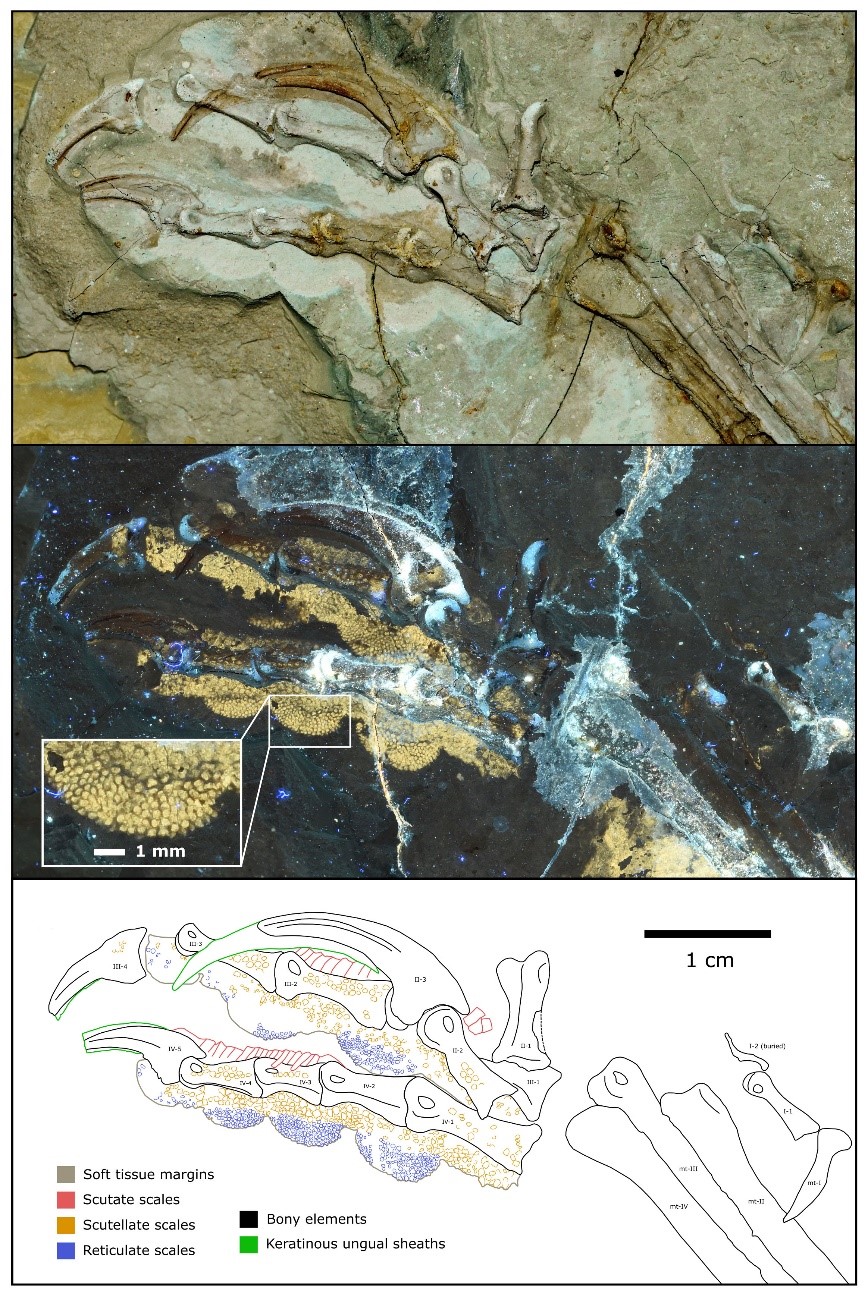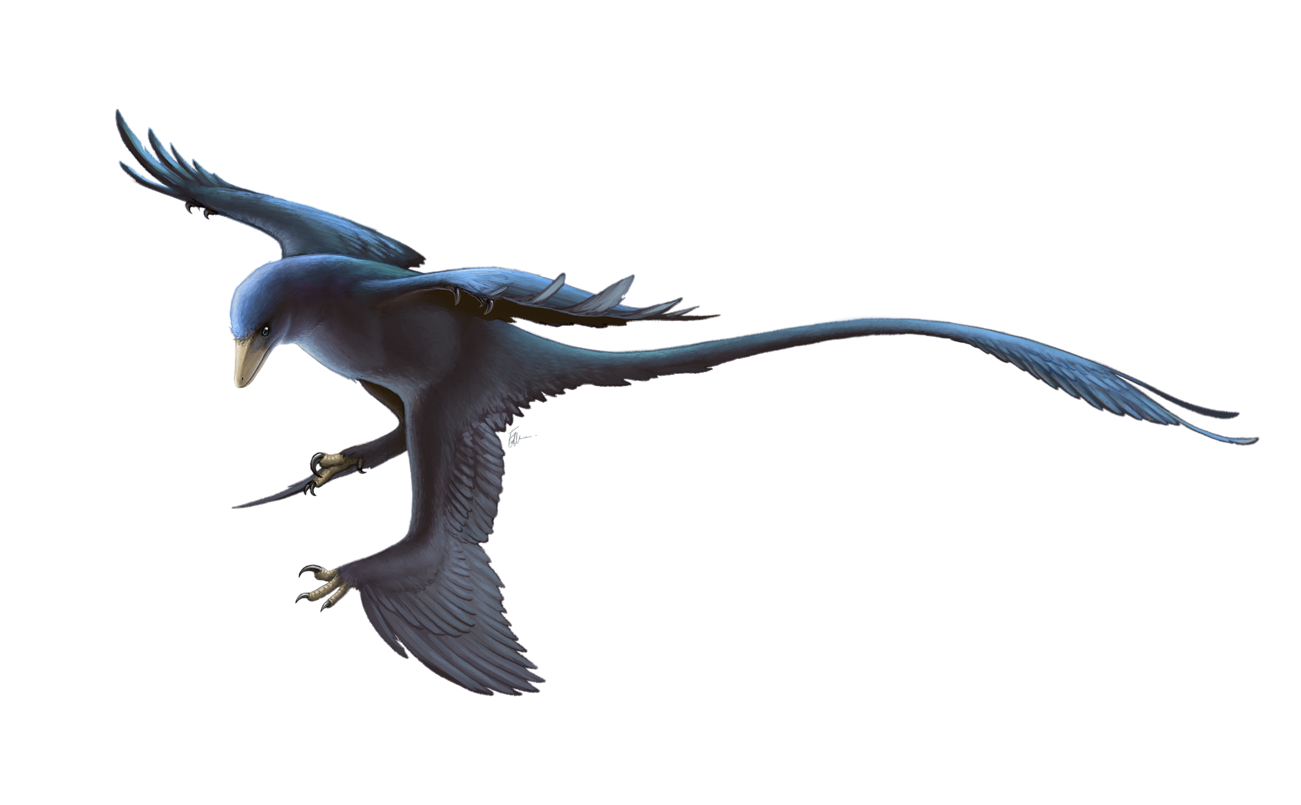A team of international palaeontologists have built a picture of the lifestyles of early birds and feathered dinosaurs based on exceptional fossils found largely in China.
The research team, which included Dr Phil Bell and PhD candidate Nathan Enriquez from the University of New England (UNE) examined more than one thousand fossils of early birds and their close flying relatives to reveal a handful of exquisite fossils that preserve details of the skin and scales on the feet. In living birds, the shape of the toe pads and foot scales, foot joints, claw shape and size all inform the grasping ability, running proficiency and feeding style. The team combined details of fossil soft tissues, claws and joints, and compared them with modern birds to determine how a range of extinct birds and dinosaurs lived and hunted.
“Because birds evolved from running dinosaurs, we might expect that the earliest flying forms were not particularly capable of hunting on the wing,” said Dr Bell. “But that turns out to be only partly true.”
The oldest flying birds like Anchiornis and Archaeopteryx from the Jurassic period show adaptations suggestive of relatively ground-dwelling lifestyles. Birds then diversified into more aerial lifestyles in the Early Cretaceous, evidenced from generalists like Confuciusornis and specialists like the climbing Fortunguavis.

Image: Laser-enhanced image of the foot of Microraptor, an Early Cretaceous flying dinosaur and relative of birds that lived in what is now northeastern China. The fleshy toe pads and scales resemble those of modern hawks. Image Credit: Pittman et al. 2022.
However, the close flying relative Microraptor, a type of dromaeosaurid ‘raptor’ dinosaur, was found to have a more specialised lifestyle similar to hawks or ospreys. This is backed up by the remains of fish found in the gut of one specimen. Other early birds like the Early Cretaceous Sapeornis show complex lifestyles that seem to be unique compared to living birds.
Mr Enriquez examined the preserved foot scales of each species and noted, “It was amazing to see how much detail we could extract from the skin of these specimens that were more than 100 million years old. Clearly, one size and shape of foot scale doesn’t fit all, and the same is true among birds today.”
Dr Leah Tsang from the Australian Museum also provided insights into the feet and toepad morphology of these early birds through comparisons with earlier work that included several species of living Australian birds of prey and non-predatory birds.
"The alignment of toepads with the underlying skeletal structure, and the toepad morphology can provide clues about the ecological lifestyles of these extinct species."
Dr Michael Pittman, Assistant Professor at the Chinese University of Hong Kong and lead author of the study, said, “The feet of living birds tell us a lot about their lifestyles. On this basis we were able to refine what we know about the lifestyle of early birds and their closest flying relatives and how this changed through time.”
The findings were published in prestigious international scientific journal Nature Communications, and can be found here.


